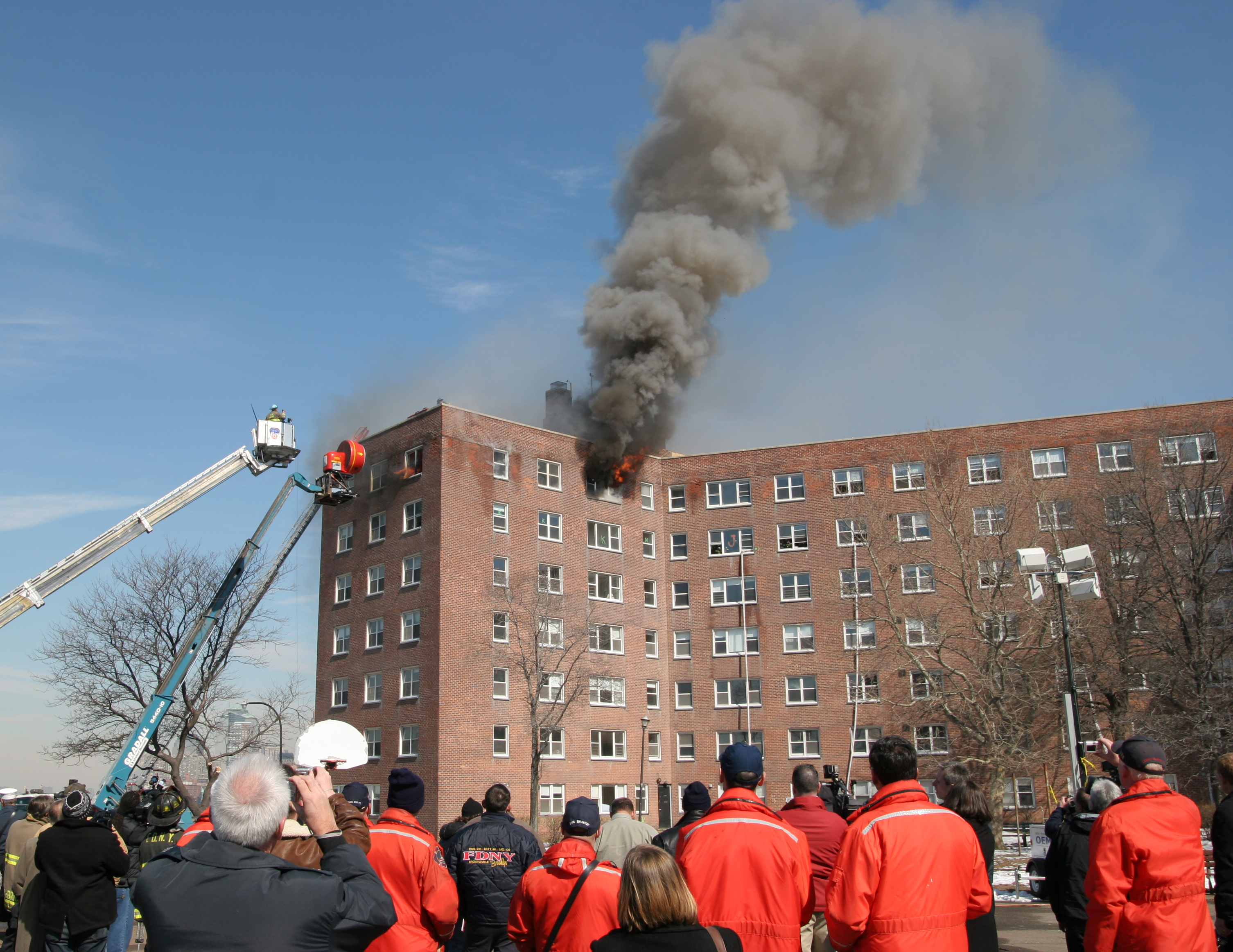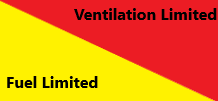Chapters
Chapter 7 – Structure Fire Research

https://www.nist.gov/news-events/news/2008/03/nist-evaluates-firefighting-tactics-nyc-high-rise-test
The time-temperature graph typically referenced in instructional manuals has changed to reflect the modern fire environment. Based on studies from ULFSRI and NIST it has been shown that the amount of energy produced by the fire is related to the available air. A fire in a box will produce energy in proportion to the amount of air in the box. As the air in the box is used and oxygen levels decrease so too will the energy production, and the fire will begin to decay. If an opening is created in the box, and air enters, the fire will begin to produce energy again. The amount of air is the governing factor for the amount of energy produced. If a second opening is made in the box the energy production would further increase, this will reflect in greater energy production and higher temperatures than the first two examples.
Consideration should also be given to the length of time between the decay stage and the introduction of fresh air. The introduction of fresh air can happen as a result of a failure in a window or through firefighting tactics. The speed at which the fire will resume producing energy is dependant on a number of circumstances, but we need to understand that if nothing is done and the fire is given air, the energy production will increase and things are going to get worse.
The energy production of a fire can be looked at in a Fuel Limited vs. Vent Limited relationship. In the early stages of fire development, energy production is predominantly governed by the amount of fuel, making it Fuel Limited. As the fire grows the energy production becomes predominantly dependent on the amount of oxygen available, making it Vent Limited. Identifying the difference between the two provides context for the fire officer to begin to evaluate other fire indicators.
The energy production of the fire and its effects on the movement of gasses requires a deeper look into gas laws, pressure, flow paths. These core concepts will allow the officer to evaluate and identify ventilation openings and smoke characteristics to make educated decisions on the extent and location of the fire.
Gas Laws
The Gas Laws help us to interpret what the smoke is telling us, and are governed by physics.
- Charles Law 1787 states that the volume of a gas at constant pressure is directly proportional to its temperature
- Gasses expand when heated, and contract when cooled
- Gasses become less dense and rise when heated
- Guy-Lussac’s Law 1802 found when the volume of gas remains the same and the temperature is increased, pressure increases in proportion to the temperature of the gas.
- When gasses are confined and heated, pressure increases.
- Increased pressure indicates higher temperatures.
These laws can be used to begin to evaluate the smoke exiting a structure. If it moves fast, the smoke has heat and the fire is creating a lot of energy. With the heat comes the creation of pressure, and with pressure comes higher temperatures. We can evaluate the smoke based on these characteristics and look at the Flow Path or Paths and smoke characteristics to gain further information on the location and extent of the fire.
Flow Path
The Flow Path is the movement of heat and smoke from the higher pressure fire area toward the lower pressure areas on the interior and exterior of the structure. The Flow Path or Paths can provide clues for evaluating the fire problem. Evaluating the opening and determining the location of the neutral plane, as well as the direction of flow, the officer will begin identifying the possible level and location of the fire problem.
The atmospheric balance between the higher temperature gasses and the fresh air. The neutral plan can be used to assess the opening and its role in the flow path. If the neutral plane is in the middle of the opening it is likely a main ventilation opening for the fire. If the neutral plane is at the top or bottom of the opening the flow is unidirectional and is an indication that there is another ventilation opening somewhere else in the structure.
- Uni-Directional – gas flow in one direction through a single opening. As an inlet or an outlet, the officer must come to a resolution that there is another opening completing the equation.
- Bi-Directional – gas flow both ways through an opening. Fire gasses exit the top part of the opening while fresh air enters the bottom. Often this indicates that this opening is the only inlet/exhaust to the fire area.
Ventilation opening classification and identification requires an understanding that higher temperature gasses will seek lower pressure areas. As pressure is created in the area of origin, smoke will move through the path of least resistance. These flows will be governed by gas laws with hot gasses going up and away to lower pressure areas.
With the assessment of flow paths, it also important to understand the principles of conservation of mass. We are unable to see fresh air moving, however, if we see smoke exiting, the Conservation of Mass Principle tells us that something is replacing it. So, when applied to bidirectional flow, we can see smoke exiting, but only on the top half of the window, and void space below. We know, based on this principle that it is fresh air that is replacing the smoke that is exiting. We also know that the fresh air will bring oxygen that will allow the fire to continue to create energy.
Evaluating Smoke
Evaluating smoke can further provide context for the officer to assist to create and effective Incident Action Plan. Evaluating smoke involves requires interpreting the Volume, Velocity, Density and Colour.
- Volume – how much. If there is a lot of smoke, it is likely that it is a large fire beyond the incipient stage.
- Velocity – how fast. If smoke is moving fast there is a greater temperature difference between where the smoke is being generated and connected spaces. Hot smoke will be turbulent and rise fast, whereas cool smoke will have a laminar flow. In comparing the two, laminar flow smoke has travelled some distance from the seat of the fire versus turbulent smoke that rises quickly is indicative of smoke with a lot of temperature.
- Density – how thick. The thicker the smoke, the less complete the combustion. Smoke is fuel. If the fuel is too rich and unable to burn due to oxygen limitations, consideration has to be given to the flammability range of dense smoke and its capacity to further spread the fire.
- Colour – how it appears. It is not an exact science. It is more likely to be used as a tool to indicate the stage of heating and location of the fire within the building by comparing smoke in different locations. Light colour smoke can be considered early stage burning. Black or carbon-rich smoke can indicate incomplete combustion.
Flow-Path Videos
Second Floor Vented Bedroom Fire (bedroom door closed)
Second Floor Vented Bedroom Fire (bedroom door open)
Second Floor Vented Bedroom Fire – Forced Ventilation (bedroom door closed)
Smoke as Fuel
Second Floor Vented Bedroom Fire – Forced Ventilation (bedroom door open)
Bidirectional Flow through Front Door – First Floor Fire (bedroom door open)
Level Entry Unvented Bedroom Fire (bedroom door closed)
Level Entry Unvented Bedroom Fire – Door control


